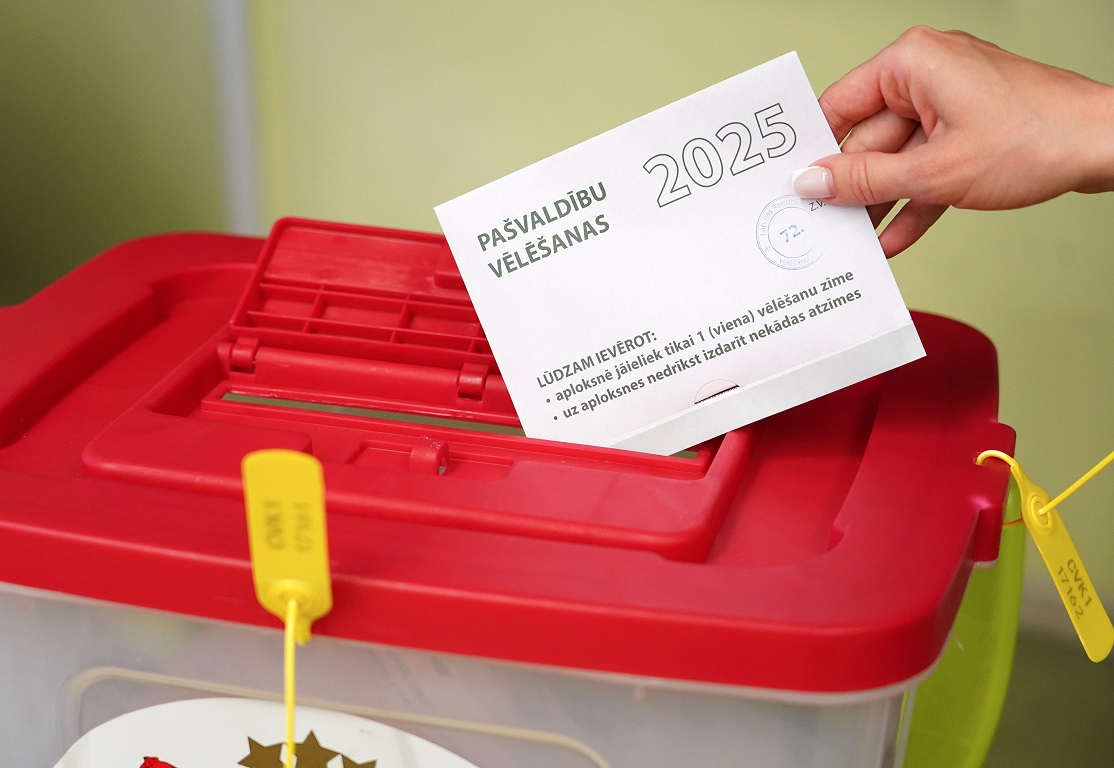What does Trump actually want to achieve? And four more questions about the import duties
/s3/static.nrc.nl/images/gn4/data130340975-20f611.jpg)
US President Trump took concrete steps in the trade war on Wednesday with his most important trading partners. He announced import duties per country that were even higher than economists feared. According to Trump, they are ‘reciprocal’ levies, with which he in his eyes unfair trade policy of the countries involved. What does he mean and what does he want to achieve? Five questions about the last salvos in the trade war unleashed by the US.
1. What are import duties again?
Import duties, Tariffsimport duties, trading rates: all these terms refer to the extra tax that a country has on goods, parts and raw materials that come from abroad. Usually that extra tax is calculated as a percentage of the price of those imported goods. Countries keep very precise, per product, what the taxes should be in the so -called Harmonised System (HS).
Companies that introduce the foreign products pay the levies as determined in the HS by reporting their imports to the American tax authorities. If the US sets import duties, the American importer therefore pays the taxes, not the exporter. In many cases, companies pass on the extra tax to their consumers. The proceeds from the taxes go to the government.
Sometimes the bill ultimately comes to the exporter: the exporter can choose to lower the selling price in order to take part of the import levy for his own account. For example, the exporter can try to be able to sell his product for an attractive price in the country that takes the extra tax. The higher the rate, the more difficult it will be. The profit margins in international trade are often very narrow, so there is little room for price reductions.
Trade rates hinder global free trade and are intended to protect national industry. The higher prices must encourage consumers to look for domestic alternatives, so that domestic production is growing.
2. What does Trump hope to achieve with it?
According to Trump, his trade policy will start the Golden Age of the United States, and it is an important step « to make America wealthy again« As he said on Wednesday. His main goal is to strengthen the international economic position of the US and to protect American employees.
In the first instance, he wants to put an end to the trade shortages that the US has with countless countries. America imports much more than it exports (last year the difference was $ 1,200 billion) and that is bad for the US, says Trump. To change this, he introduces the import duties that must slow import by making it more expensive.
In the announcement of his trade measures, Trump came up with a long list of companies that, according to him, have already invested ‘billions and billions of dollars’ in the US since he took office. The list consisted largely of old commitments. After all, limiting imports is a means to achieve the ultimate goal of the president: activity and thus increase employment in the US. « If you want a rate of zero percent, you just have to produce your product here in America, » said Trump.
With his plans, Trump seems to focus primarily on satisfying factory workers, whom he had also invited to be present at the kick -off of the trade war. That is remarkable, because in the US, just like in Europe, the majority of people in the service sector work.
3. What did Trump based his reciprocal taxes on?
Already on the day of his appointment, Trump announced that he would put to a team to map out unfair commercial practices from other countries, and Wednesday was the day that the results would be known. Trumps reciprocal rates would be an answer to all kinds of trade-reducing measures of the US trading partners, such as taxes such as VAT, but also currency manipulation and government subsidies. Those measures would be converted to de facto import duties, on which the US import duties would be based.
The list of rates that Trump presented on Wednesday, however, came as a big surprise for many. The European Union, which, according to the usual trade rules, uses an average rate of just over 3 percent for American goods, suddenly 39 percent were on the list. Even if the VAT was counted, which Trump had played on, that does not come close yet. How could this be? Which sum had Team Trump made?
Economists soon beat. How did the White House come to the list of unfair ‘rates’? The answer is shocking in its simplicity: the US government has the size in dollars of the trade deficit in goods that the US has shared with a certain country by the total amount for which from that country has been imported. According to Trump, that trade deficit is directly related to the amount of unfair measures that a country takes against the US. The White House more or less confirmed to have applied this method: an economic formula with a lot of Greek letters must radiate exactly and expertise, but it is no more than counting at primary school level.
An example: with Bangladesh, America has a trade deficit of 6.2 billion dollars. The total American import of goods from Bangladesh was $ 8.4 billion last year. If you divide 6.2 by 8.4 you arrive at 0.738. And indeed Bangladesh stands for 74 percent on the board that the president held up. China? Trade deficit of 295 billion, total import 438 billion: 295/438 = 0.68. And yes: China is 68 percent on the ‘unfair levies’ list.
The last step, determining the reciprocal rates, is then simple. Share the country’s rate by two and you have the ‘mild’ or even ‘friendly’ American reciprocal rate.
It is certainly simple, but economically totally incomprehensible, as many analysts write. The goal, the trade balance to reduce to zero, sanctifies the means here. With trade economy, let alone trading economy within the global agreements in the World Trade Organization, it all has little to do.
4. What will Dutch companies that export to the US and how do they deal with this?
Companies now mainly suffer from extreme uncertainty. Although the taxes do not fall out of the blue and Trump has taken concrete steps in the trade war during his ‘Liberation Day’, companies still have a lot of questions about their interpretation. « We do not yet know how the European Union will respond, » says Marc Ter Haar, director of Amcham, advocate for American companies in the Netherlands. Is the EU going back with its own import duties against the US, making importing American products more expensive here? Will the EU succeed in negotiating lower levies on European goods?
In addition to all the uncertainty they cause, American measures will certainly hurt Dutch companies. The levies announced on Wednesday are higher than what most economists feared (although Trump called them ‘mild’). Ter Haar: « The Netherlands does not want any trade limit. We export for 51 billion euros a year to the US. And those products are made more expensive. That is not good for our exports. » VNO-NCW, the largest entrepreneurial organization in the Netherlands: « The measures will probably have major consequences for international trade. »
Winemaker Neleman Organic Vinyeaards already sees the trade war in their warehouse in Zutphen. « Trade is in shock, orders are canceled or at least pushed forward, » the winemaker emails his customers. « It is also swallowing for us. Orders, containers that were ready to go to America have been canceled. » Neleman makes the need a virtue and calls on his customers to buy European wine. Made in Europe Buying is a sentiment that seems to get more and more a foothold.
The Woerdense potato processing machine manufacturer Kiremko sees that the levies mainly have an impact on ‘the organization’, says director Marcel of Huissteden. The company works together with an American partner company in Idaho: that has occasionally built machines for American customers of Kiremko. The contact is ‘intensified’ in the run -up to the taxes, so that they can build more machines in Idaho. « We have transferred more building plans. » Kiremko receives a license payment for this, the turnover is for the partner company.
This way, American customers can continue to serve without a major financial impact. But a lot changes practically. « We now send people there for production, and to start the production lines. » Fortunately, Van Huissteden jokes, there are no taxes on the import of employees yet.
5. What does this mean for the wallet of Dutch consumers?
Nothing at all for the time being. Trump’s import duties make goods that go to America more expensive, they do nothing with the goods that are produced and consumed elsewhere in the world.
This becomes different if countries take reimbursement measures. If the EU starts to introduce counter -duties on American products in response to Trumps taxes, they will become more expensive here. Then European consumers could also notice something.
Europe knows this and therefore tries to formulate a careful response with minimal damage to its own citizens. For example, the EU is considering measures that the consumer does not immediately take, such as being bothering Big Tech and large American banks. For the first package of countermeasures (after the levies on aluminum and steel), for example, taxes were chosen on American products for which European consumers can easily find an alternative (such as jeans) or which are only purchased by a small group of enthusiasts (Harley Davidson engines). Of the proposed American products on which European taxes can occur, soy with an import value of 2 billion euros is greatest in size. But that soy can easily be removed from countries as Brazil and disappears mainly in animal feed.
There is another route through which European and other consumers can notice something of the American taxes: moving trade routes. If it is no longer attractive for China to export products to America, that country can choose to drop them off in Europe. This leads to oversupply compared to the current situation and can therefore entail price reductions. This dumping of products is initially good for consumers (lower prices) but can ultimately push European producers from the market, with all the adverse economic consequences that this is (less activity, more unemployment, lower economic growth).
This has already happened with, for example, solar panels: it was no longer allowed to deliver China to the US, after which the European market was flooded with cheap Chinese panels. European panel builders could not compete with that and many went bankrupt.

/s3/static.nrc.nl/images/gn4/data133317775-d0126f.jpg)
:format(webp)/s3/static.nrc.nl/bvhw/wp-content/blogs.dir/114/files/2021/11/trujilo-vierkant.png)
/s3/static.nrc.nl/images/gn4/stripped/data133311162-89da16.jpg|https://images.nrc.nl/0GhfYXflp44vL8qLyvwS0lBuz-I=/1920x/filters:no_upscale()/s3/static.nrc.nl/images/gn4/stripped/data133311162-89da16.jpg|https://images.nrc.nl/eiTEPfNVErZvLkKwpzeS_a75FXk=/5760x/filters:no_upscale()/s3/static.nrc.nl/images/gn4/stripped/data133311162-89da16.jpg)



